

These Beautiful Antique Photos Were Made With Potato Starch. Graphic Design Portfolios: The New Online Resume. Building an online portfolio is possibly the most important step you can take in your graphic design career.

Here at HOW, we decided it was time for a three-part HOW-to guide on graphic design portfolios and the process of building them. Included is advice from well-known designers like Malika Favre, tips from in-house designers and tricks from students going through the portfolio building process themselves. I. Pick your Purpose: The most notable reason for creating an online portfolio is to have quick and easy access to your best works from nearly any location.
First impressions are hard to gauge, but having an online portfolio ensures you make the best impression possible. Step one to creating a graphic design portfolio is to determining its purpose. Les lumières de Paris en 1870 par Charles Marville. Né à Paris en 1813 et mort en 1879, Charles Marville est un photographe français qui est connu pour ses photographies de de la capitale avant les travaux d’Haussmann.

A partir de 1865 il a le titre officiel de « Photographe de la Ville de Paris » et réalise un grand nombre de photos des aménagements urbains de l’époque. Glyphr Studio - font design, online. _graphics_manual_nhb_1430-2_jan_1976. 21 Best Comic Book Artists from Comic-Con: A Designer Guide. The world’s largest comic book convention has some secrets that are practically unknown to lovers of graphic design and illustration.
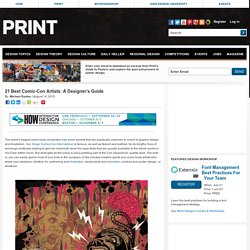
San Diego Comic-Con International is famous, as well as feared and loathed, for its lengthy lines of lemmings endlessly waiting to get into mammoth show biz hype-fests that are usually available to the whole world on YouTube within hours. But what gets all the press is just a piddling part of the Con experience, quality-wise. The truth is, you can easily spend most of your time in the company of like-minded creative spirits and comic book artists who share your passions, whether it’s cartooning and illustration, storyboards and animation, product and poster design, or whatever.
So here are some suggestions on how to indulge and immerse yourself in visual culture, free of Hollywood hassle: Le guide de construction des lettres de Joris Hoefnagel. Joris Hoefnagel (1542 – 1600) est un enlumineur qui a marqué l’histoire de l’Art néerlandais en officiant dans la période de transition entre l’enluminure médiévale et la peinture de nature morte de la Renaissance.
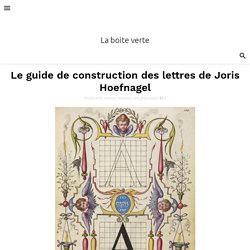
How to Treat Kidney Stones with Diet. Joanne Leah. Digital Agencies in Tokyo: A Look at Japanese Web Design. Internet Archive: Digital Library of Free Books, Movies, Music & Wayback Machine. Zeng Hao 曾浩(敦煌)唯一授权官方网站_曾浩(敦煌)简介_曾浩(敦煌)作品欣赏_油画曾浩(敦煌)_曾浩(敦煌)新闻_曾浩(敦煌)展览_曾浩(敦煌)画册_曾浩(敦煌)作品价格-曾浩(敦煌)官方网站 画家曾浩 曾浩油画 油画家曾浩 曾浩的博客 曾浩油画作品 曾浩的个人空间 博客 曾浩油画艺术 曾浩艺术资讯新闻 曾浩作品价格 曾浩展览 曾浩油画精选集 飞天 曾浩敦煌系列 敦煌美女图系列 曾浩敦煌 曾浩敦煌飞天 曾浩敦煌系列油画 敦煌油画作者. M. S. Christensen. Disqus - Recommended Discussions. Sauce brune à poutine et à hot chicken Recettes. Clothing of the Future: 1930s Predictions of 21st Century Fashion. As outlandish as some of their ideas may be, the soothsayers from 1930s news program Pathetone Weekly weren’t completely off the mark.
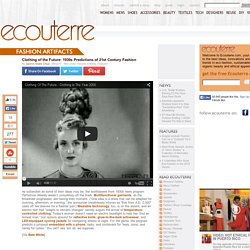
Multifunctional garments, as the broadcast prophesied, are having their moment. (“One idea is a dress that can be adapted for morning, afternoon, or evening,” the announcer breathlessly intones as “Eve from A.D. 2,000″ casts off her sleeves for a flashier pair.) Meet the Photographer Drenching His Subjects in Honey. "Tao," 2012.
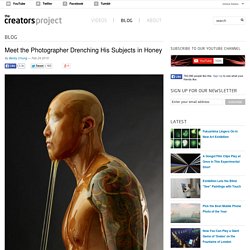
Images via Full buckets of honey are dumped on the bodies of Blake Little's human subjects, from young babies, to athletes, to 85-year-old women, drenching them in the gooey, golden syrup. For photo series, Preservation, the photographer uses the sticky stuff to capture varying body types, ages, races, and sizes like flies trapped in amber. “The honey has a way of democratizing people, to transform them in kind of a universal way,” Little explains in the behind-the-scenes video below. Tomates sans eau ni pesticide : cette méthode fascine les biologistes. Palazzo Pitti. Early, tinted 20th-century photograph of the Palazzo Pitti, then still known as La Residenza Reale following the residency of King Victor Emmanuel II between 1865 and 1871, when Florence was the capital of Italy.
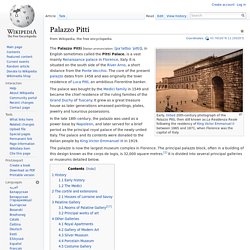
The Palazzo Pitti (Italian pronunciation: [paˈlattso ˈpitti]), in English sometimes called the Pitti Palace, is a vast mainly Renaissance palace in Florence, Italy. It is situated on the south side of the River Arno, a short distance from the Ponte Vecchio. The core of the present palazzo dates from 1458 and was originally the town residence of Luca Pitti, an ambitious Florentine banker. The palace was bought by the Medici family in 1549 and became the chief residence of the ruling families of the Grand Duchy of Tuscany.
It grew as a great treasure house as later generations amassed paintings, plates, jewelry and luxurious possessions. The palazzo is now the largest museum complex in Florence. History[edit] Early history[edit] The Medici[edit] The cortile and extensions[edit]